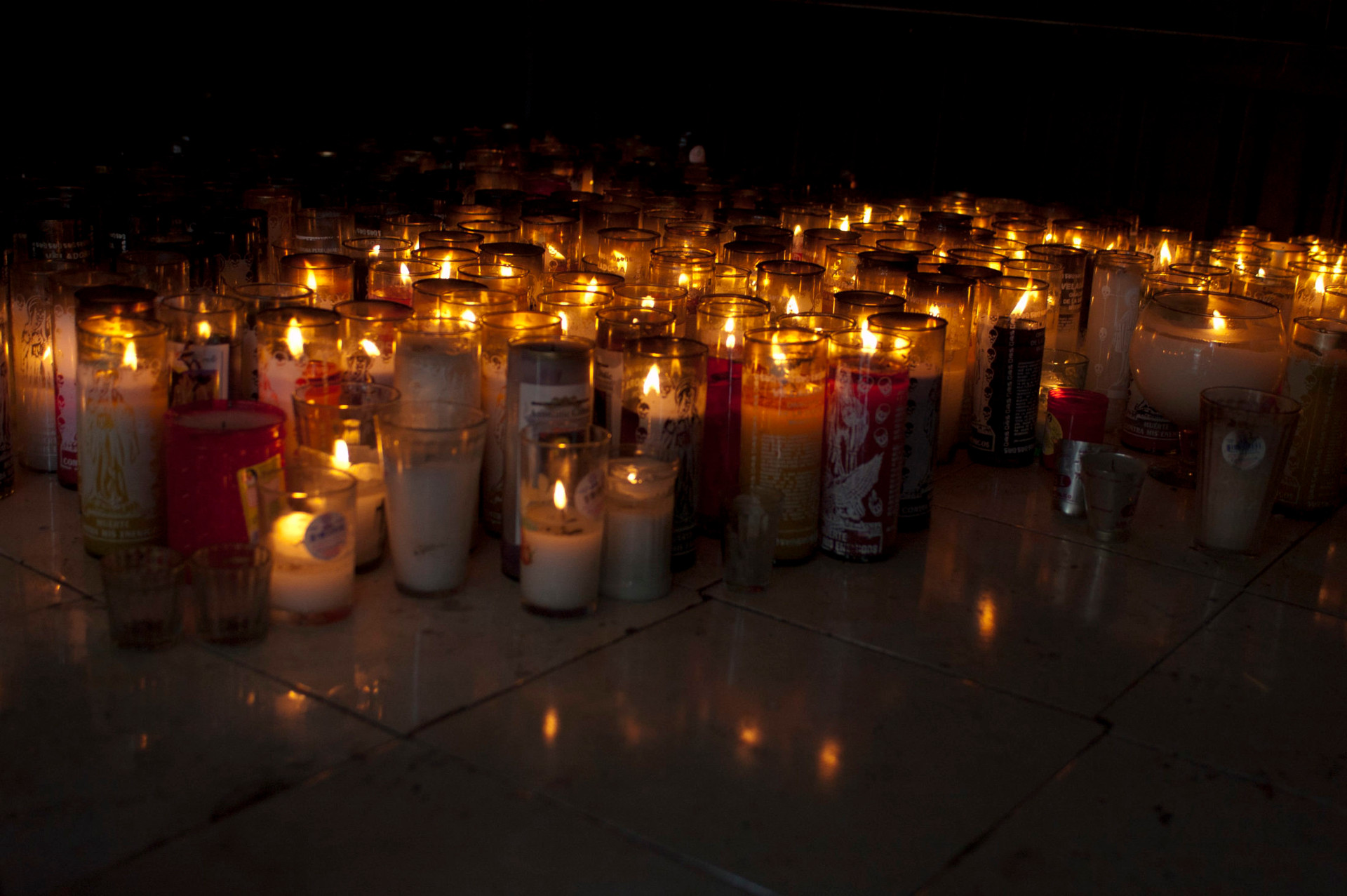
Desperation looks different in various cultures, but the recurring image of it in my mind is thousands of people traveling great distances, sometimes on bloody knees, to get a blessing from a statue of the Virgin Mary. With tears in their eyes, they pour out empty words, hoping in anguish that she will change their lives.
I’ve watched this practice with a broken heart as I’ve lived for more than a decade in Buenos Aires, following Christ in a place where millions of Catholics seem to have the truth within reach yet do not grasp it. It is the place where Jorge Mario Bergoglio—Pope Francis—served before his move to the Vatican, and he himself tweeted on the dawn of the new year for Catholics to, “Entrust the new year to Mary, Mother of God, so that peace and mercy may grow throughout the world.”
Pope Francis tweeted for Catholics to
“Entrust the new year to
Mary, Mother of God…”
In the place where I live, that type of trust has led to some disturbing fruit.
Not the Same Beliefs
In the place where I live, that type of trust has led to some disturbing fruit:
- The people I mentioned who crawl on bloody knees to pray to a statue of Mary.
- A cultural identity that excludes and, in some cases, persecutes those who leave the Roman Catholic faith.
- Impoverished people who buy images of a saint because they believe the object can protect, heal, or help them.
- Sincere Catholics who believe they cannot understand the Bible for themselves but have God’s Word only an arm’s length away.
- Former Catholics who have rejected faith altogether, either because of abuses within Catholicism or because of the irrelevance of Catholicism to their own lives.
While Catholics may share some beliefs in common with evangelical Christians, there are significant differences when it comes to the gospel and how a person becomes right with God. For example, Roman Catholic doctrine contradicts the biblical teaching of salvation by grace alone (Eph. 2:8–9). It also differs with Scripture’s teaching on Jesus Christ’s unique person and work (Phil. 2:9–11, John 14:6, Heb. 4:14–16).
Because we have a common history with the Roman Catholic Church, evangelicals can sometimes be confused as to the actual spiritual condition of professing Roman Catholics. But, like all people, they too must be engaged with the gospel.
Evangelicals can sometimes be confused as to the actual spiritual condition of professing Roman Catholics. But they must be engaged with the gospel.
Some Practical Ways to Reach Out
As we seek to share the gospel with Roman Catholics in the Americas, it has been helpful for us to approach them in these ways:
- Build a relationship.
In the initial encounter, a genuine smile and conversation often open the door to talk about spiritual issues. A brief mention of the work of Christ in your life may provide the opportunity to ask questions concerning the other person’s religious beliefs. - Discover their spiritual condition.
“Oh, I’m Catholic,” is a typical response to spiritual questions in the Americas, but that answer does not help you understand what the person truly believes. Ask follow-up questions such as “Why did you choose to become Catholic? How has the Catholic faith met your personal spiritual needs?” Listen carefully because this will help you know how to share the gospel in a way he or she can understand. - Use shared beliefs as bridges for sharing the gospel.
Talking about the Lord’s Prayer or the Nicene Creed might create bridges that could lead to the gospel. There are many other bridges, so look and listen for them. - Differentiate your relationship with Christ and religious adherence.
Share how Christ has worked in your life in a personal way and how your life is now different because of the present indwelling of the Holy Spirit. - Emphasize the importance of Scripture.
Your ability to read, understand, and apply God’s Word clearly differentiates you from the average Catholic who looks to someone else for understanding and application. Emphasize the power of God’s Word by intertwining it in your conversation. - Share the gospel clearly, but not confrontationally.
Consider using personal examples, such as, “In my life, I turned from my sin by placing my faith in Christ alone.” - Prepare them for potential persecution when you present the gospel.
Promises of favor or blessing abound in the Americas. But being upfront about potential persecution for leaving Catholicism to know and trust Christ has a sobering effect. Our willingness to share about potential hardship authenticates the biblical message. True believers in the biblical message of salvation by grace alone are willing to suffer at the point of conversion. - Direct them to a community of faith.
Generally, the people of the Americas are relational people. They live in community, so we need to be able to point the person to a family of faith that will disciple them as they commit to follow Christ. - Pray for them (and if possible with them).
Another aspect that differentiates evangelical faith from the Roman Catholic religion is our ability to access God the Father at any moment and speak to him directly from the heart. We share with our Catholic friends that we are committed to praying for them and, when possible, we pray with them. It’s a powerful witness, as most Catholics have never looked into the life of someone with a personal relationship with God.
Kevin and his wife Laura have served in the Americas with the IMB for thirteen years.


